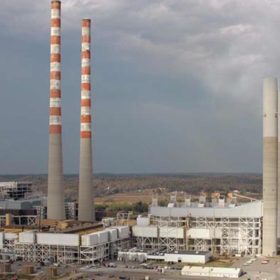U.S. Presidential candidates Hillary Clinton and Donald Trump have very different outlooks on the country’s energy future. As the world looks to reduce carbon emissions following the 2015 Paris Agreement on climate change, Clinton’s plans would keep the U.S. emissions on their current downward trajectory, while Trump’s would send them rising again, according to Lux Research. All told, estimated emissions would be 16% higher after two terms of Trump’s policies than they would be after two terms of Clinton’s, amounting to 3.4 billion tons greater emissions over the next eight years.
Clinton has set forth an ambitious goal of deploying enough solar capacity to power every home in the U.S. and would use natural gas as a “bridge” in a transition from fossil fuels to renewables. On the other hand, Trump’s vision includes greater production of fossil fuels and criticizes incentives for renewables. Clinton intends to follow current President Barack Obama’s goal of reducing emissions by up to 30% by 2025, while Trump will seek to cancel Obama’s Clean Power Plan and withdraw from the Paris Agreement.
“As independent analysts, we don’t endorse candidates, but the data and analysis clearly show that energy policy and the resulting emissions will go in very different directions under Clinton and Trump,” said Yuan-Sheng Yu, Lux Research Analyst.
“Climate change hasn’t been front-and-center in media coverage of this election but voters should be aware of the implications of their choice on this important issue,” he added.
Lux Research analysts evaluated Clinton’s and Trump’s proposed plans and their likely impact on adoption of various energy sources and technologies. While of course there is still uncertainty about the specifics of each candidate’s policies and how successful they would be in implementing them, from the principles each has laid out, it’s possible to make reasonable high-level estimates of the impact.
Lux Research found:
- Coal will continue to play second fiddle to natural gas. Despite Trump’s rallying cry for the coal industry, his plan to lift regulations on gas extraction will only make coal’s comeback even more difficult as fracking expands, keeping down gas prices and disadvantaging coal. Of course, Clinton staying the course on Obama’s Clean Power Plan would also help to continue coal’s slide.
- Renewables will spur storage and an entirely new utility value chain. Renewable energy capacity has quickly grown in the U.S. but Clinton’s ambitious target will likely promote a shift from utility-scale to commercial- and residential-scale generation. A new distributed generation value chain is emerging, including energy storage and distributed energy resource management systems (DERMS) to manage renewable intermittency.
- The oil and gas industry will continue to innovate under either administration. Trump’s plan to open drilling in the Artic is unlikely to result in a surge of Artic drilling due to the capital intensity and complexity of those projects. The largest difference between administrations would be in onshore regulations, where under Clinton, new pipeline mandates and restored water regulations would drastically affect both operators and service companies. Regardless, the industry will still push to reduce emissions in order to maintain competitive operating margins in global markets.
Tracking innovations and emerging technologies in the energy sector is part of Lux Research’s Alternative Fuels, Distributed Generation, Energy Storage, Exploration & Production, and Solar Intelligence services.





